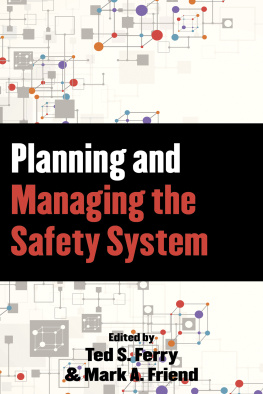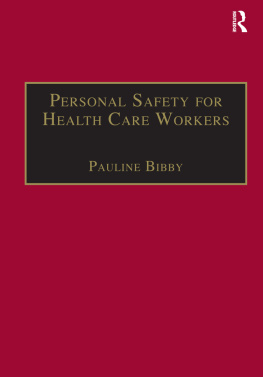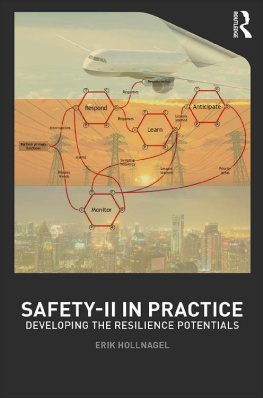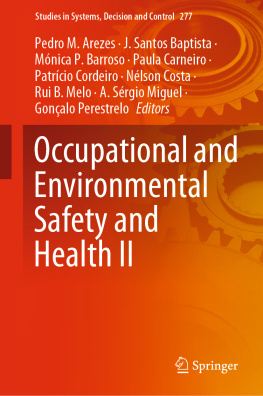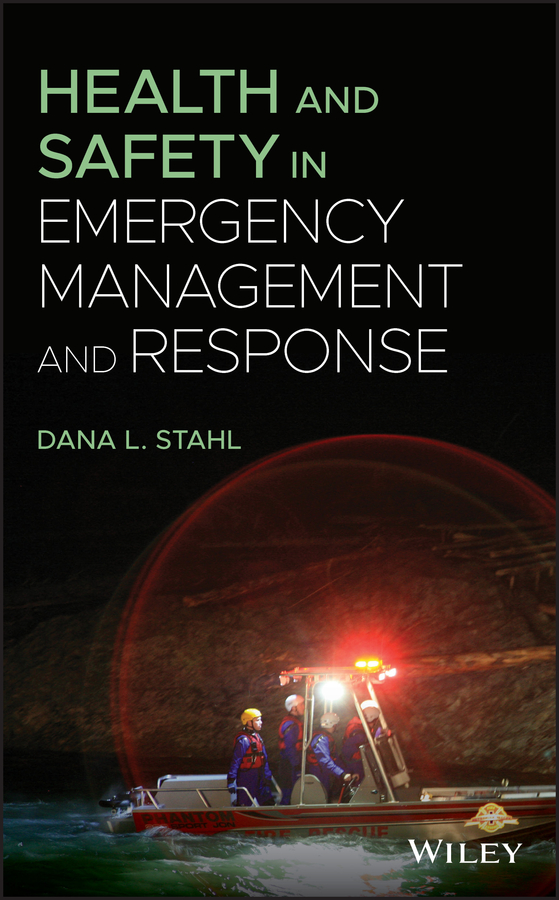
Table of Contents
List of Tables
- Chapter 1
- Chapter 2
- Chapter 3
- Chapter 4
- Chapter 5
- Chapter 6
- Chapter 10
- Chapter 12
List of Illustrations
- Chapter 1
- Chapter 2
- Chapter 3
- Chapter 4
- Chapter 5
- Chapter 6
- Chapter 8
- Chapter 9
- Chapter 11
Guide
Pages
Health and Safety in Emergency Management and Response
Dana L. Stahl

This edition first published 2021
2021 John Wiley & Sons, Inc.
All rights reserved. No part of this publication may be reproduced, stored in a retrieval system, or transmitted, in any form or by any means, electronic, mechanical, photocopying, recording or otherwise, except as permitted by law. Advice on how to obtain permission to reuse material from this title is available at http://www.wiley.com/go/permissions.
The right of Dana L. Stahl to be identified as the author of this work has been asserted in accordance with law.
Registered Office
John Wiley & Sons, Inc., 111 River Street, Hoboken, NJ 07030, USA
Editorial Office
111 River Street, Hoboken, NJ 07030, USA
For details of our global editorial offices, customer services, and more information about Wiley products visit us at www.wiley.com.
Wiley also publishes its books in a variety of electronic formats and by printondemand. Some content that appears in standard print versions of this book may not be available in other formats.
Limit of Liability/Disclaimer of Warranty
In view of ongoing research, equipment modifications, changes in governmental regulations, and the constant flow of information relating to the use of experimental reagents, equipment, and devices, the reader is urged to review and evaluate the information provided in the package insert or instructions for each chemical, piece of equipment, reagent, or device for, among other things, any changes in the instructions or indication of usage and for added warnings and precautions. While the publisher and authors have used their best efforts in preparing this work, they make no representations or warranties with respect to the accuracy or completeness of the contents of this work and specifically disclaim all warranties, including without limitation any implied warranties of merchantability or fitness for a particular purpose. No warranty may be created or extended by sales representatives, written sales materials or promotional statements for this work. The fact that an organization, website, or product is referred to in this work as a citation and/or potential source of further information does not mean that the publisher and authors endorse the information or services the organization, website, or product may provide or recommendations it may make. This work is sold with the understanding that the publisher is not engaged in rendering professional services. The advice and strategies contained herein may not be suitable for your situation. You should consult with a specialist where appropriate. Further, readers should be aware that websites listed in this work may have changed or disappeared between when this work was written and when it is read. Neither the publisher nor authors shall be liable for any loss of profit or any other commercial damages, including but not limited to special, incidental, consequential, or other damages.
Library of Congress CataloginginPublication Data
Names: Stahl, Dana L., 1965- author.
Title: Health and safety in emergency management and response / Dana L.
Stahl.
Description: First edition. | Hoboken, NJ : Wiley, [2021] | Includes
bibliographical references and index.
Identifiers: LCCN 2020015446 (print) | LCCN 2020015447 (ebook) | ISBN
9781119560975 (cloth) | ISBN 9781119561064 (adobe pdf) | ISBN
9781119561101 (epub)
Subjects: LCSH: Emergency management Safety measures. | First
responders Health and hygiene.
Classification: LCC HV551.2 .S726 2020 (print) | LCC HV551.2 (ebook) |
DDC 363.34/80289 dc23
LC record available at https://lccn.loc.gov/2020015446
LC ebook record available at https://lccn.loc.gov/2020015447
Cover design by Wiley
Cover image: Isaac Howard
Set in 9.5/12.5pt STIXTwoText by SPi Global, Chennai, India
Printed in the United States of America
10 9 8 7 6 5 4 3 2 1
Preface
My first exposure to the field of Emergency Management came when I was working as an Industrial Hygienist at the Port of Seattle. Michael Mandella, Chief of the Port of Seattle Fire Department and later the Airport Emergency Operations Manager, decided that it was important to include an Industrial Hygienist in the Airport Operations Plan, and provided me with my introduction to the Incident Command System and the National Incident Management System.
In 2008, I changed jobs, and began working at the Central Puget Sound Regional Transit Authority, known locally as Sound Transit, first as a Senior Safety Specialist and later as the Manager of Health, Safety and Emergency Management. When I started, Sound Transit was getting ready to begin light rail operations, and the Safety Division had the responsibility of coordinating interagency emergency response exercises in support of the light rail safety certification plan. This involved working closely with emergency responders in the region, including Seattle and South King County fire and police departments, and my former colleagues at the Port of Seattle.
We had many meetings with our colleagues in these departments, and these meetings were peppered with acronyms commonly used in emergency response. Since I was the only person in my department who had taken any incident command system (ICS) training at the time, I was the only one who knew what these acronyms meant and fully participate in these conversations.
My Division leadership was impressed: Somehow I had suddenly become the expert on emergency management at Sound Transit, and my Director decided that I should be given responsibility for the emergency management program that we now realized that we needed.
I later learned there is a term for what had happened. It is called a Field Promotion.
I, of course, knew that I had a lot to learn about emergency management. I have a master's degree in industrial hygiene, and am a Certified Industrial Hygienist, and knew that I didn't have nearly as much background to fall back on as I took on the challenge of emergency management. Today, students can obtain degrees in Emergency Management, but this type of training was not so readily available in 2008. Fortunately, I had excellent resources to work with, and I am extremely grateful to my former colleagues at the Port of Seattle, Michael Mandella, Kathleen Gleaves, Ron Harmon, and Kristine Ball, as well as Barb Graff, Laurel Nelson, and Grant Tietje from the Seattle Office of Emergency Management for helping me get started on this program and for patiently answering all of my questions.
I am also grateful to my Division leadership, Hamid Qaasim and Peregrin Spielholtz, for giving me the opportunity to take on the emergency management program, and to my colleagues Selena Ngo and Lori Bisping for the work they did in making this initial emergency management program a reality. Lori, I know the program has come a long way since those early days.
Next page


